Olight i1R 2 EOS review
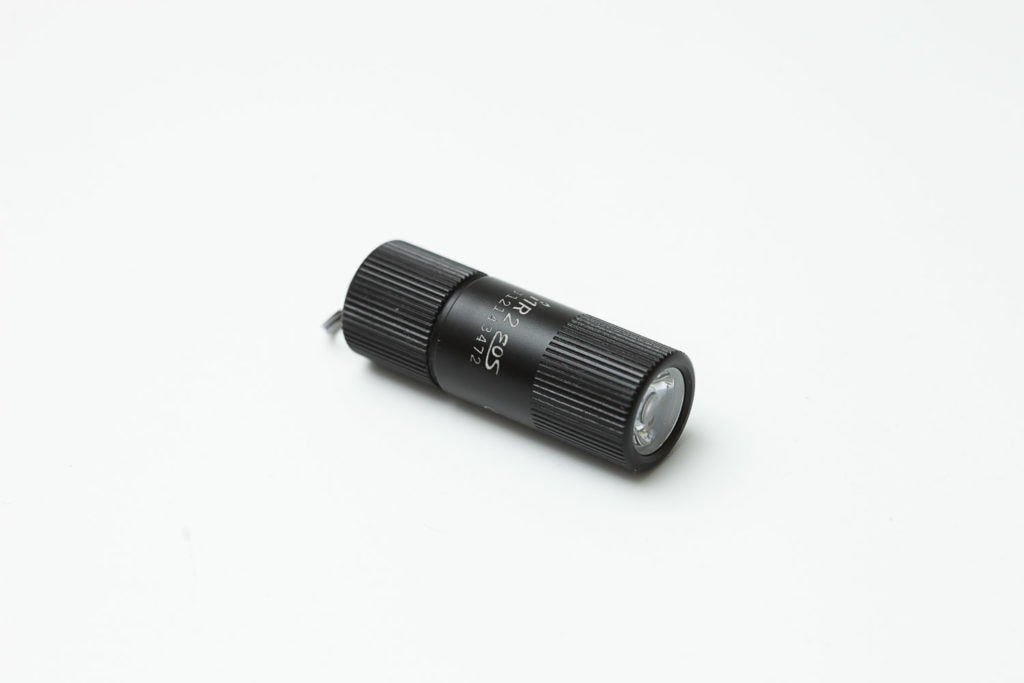
Olight i1R 2 EOS specifications
| Brand / Model | Olight i1R 2 EOS |
|---|---|
| LED | unknown |
| Lumens | 5/150 lm |
| Beam intensity | 400cd |
| Battery config. | Built in |
| Material | Aluminum |
| Modes | 2 |
| Blinkies | N/A |
| Reflector | TIR |
| Waterproof | IPX8 |
| Review date | May 2020 |
Introduction:
The Olight i1R2 EOS replaces the i1R EOS and changed the LED amongst a few other things. This little flashlight weighs less than 12 grams and you wouldn’t even notice it when it’s hanging on your keys. The i1R2’s head is not detachable, so you charge the light when the head is unscrewed, but not taken off. This review is going to be a little short, but with the most important information.
What you’ll get:
Olight kept the packaging to the bare minimum. No accessories except for the keychain ring.
- Olight i1R 2 EOS flashlight
- Manual
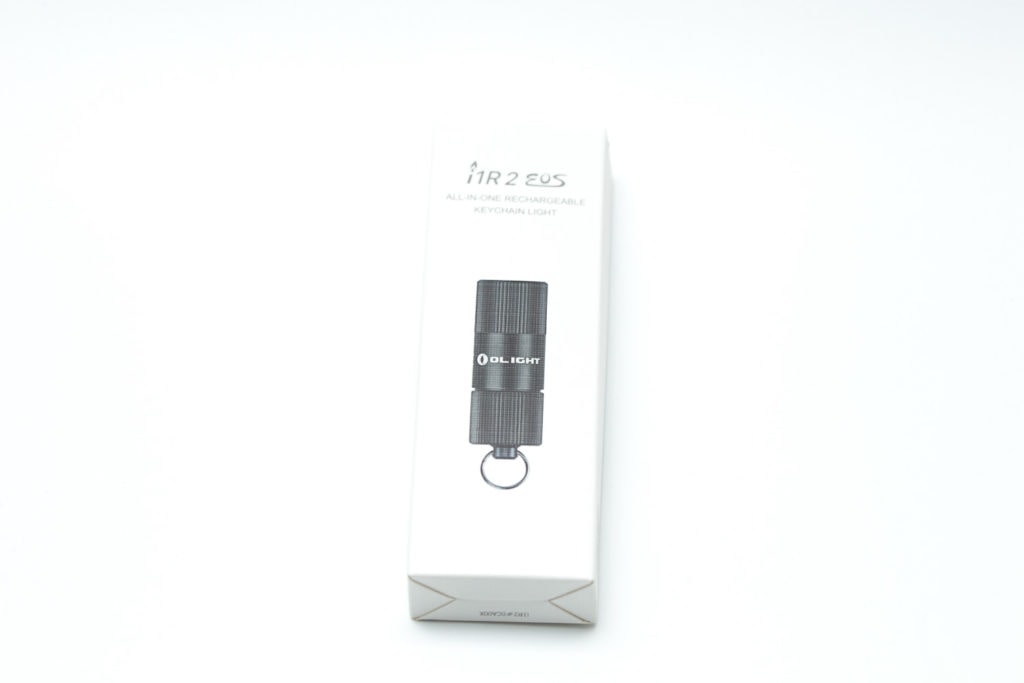
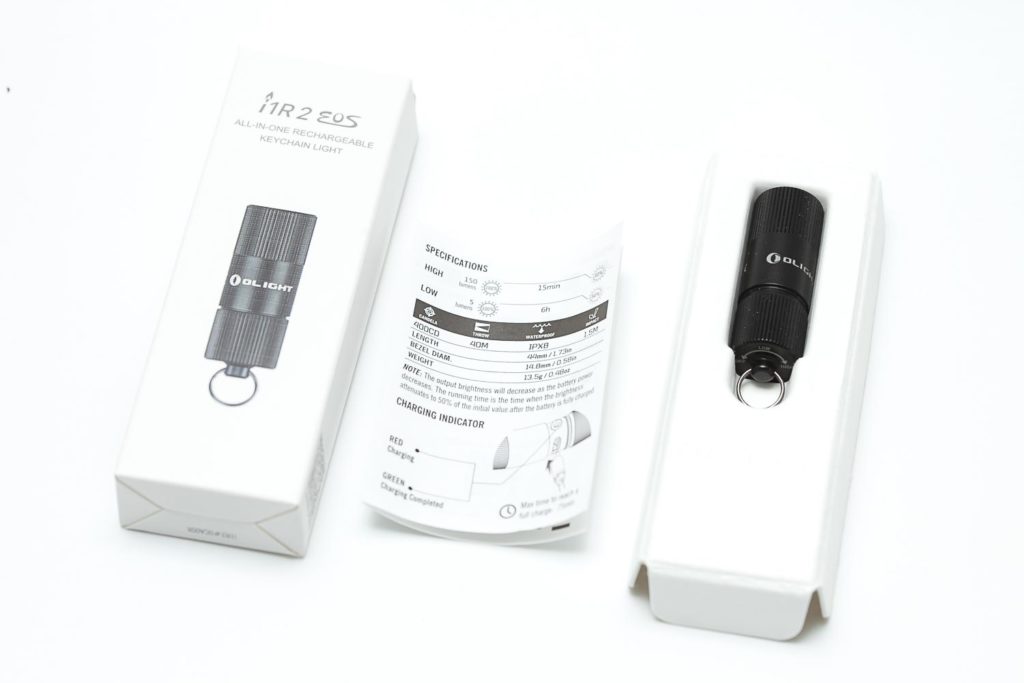
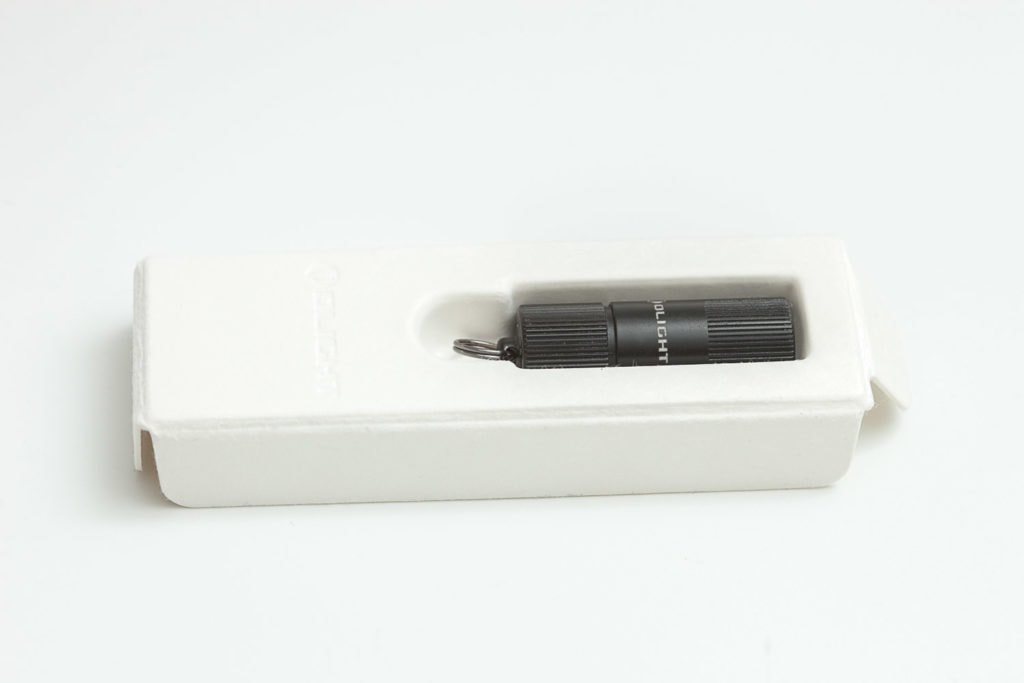
Handling of the light
No, this is not a thrower, nor is this a typical EDC flashlight. It’s built to be tiny and lightweight. To turn it on, you twist the body clockwise, and to turn it off you do the same but counter-clockwise.
To change between the 2 modes, you simply twist the body to on and twist it a little further for High. If you twist it too far when turning off, the USB port will be visible. It looks like the older version’s head was detachable. And I can only imagine this could be problematic. You untwist the head too far, and you might lose the most important of the light.
The i1r 2 EOS doesn’t have a detachable head, so you don’t need to worry about losing the head while unscrewing the body. As you can see in the following pictures, it’s a really small flashlight.
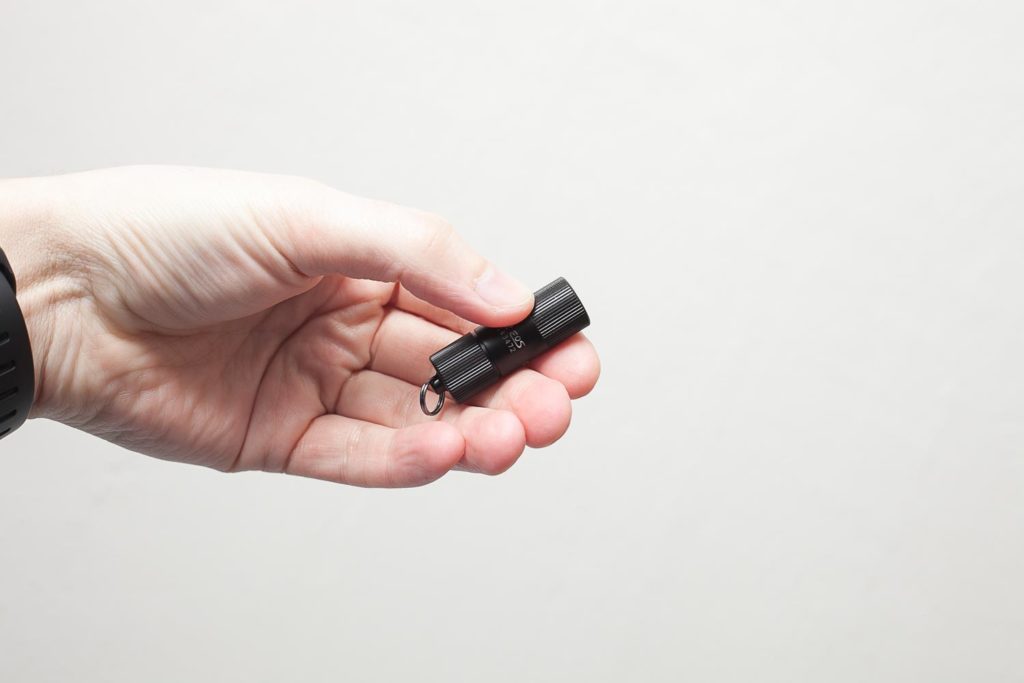
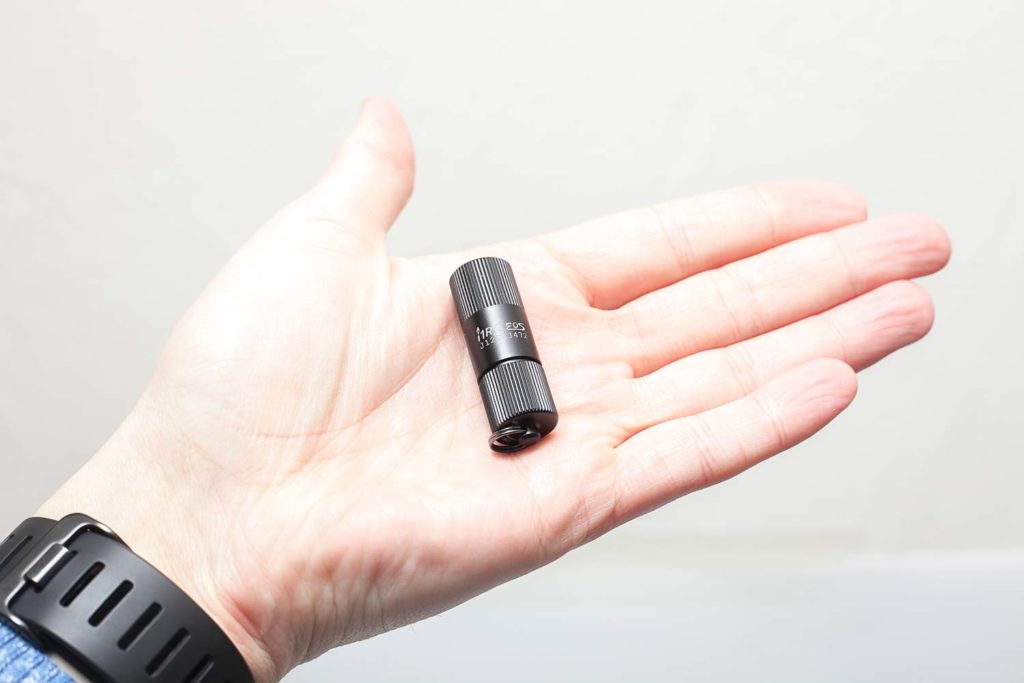
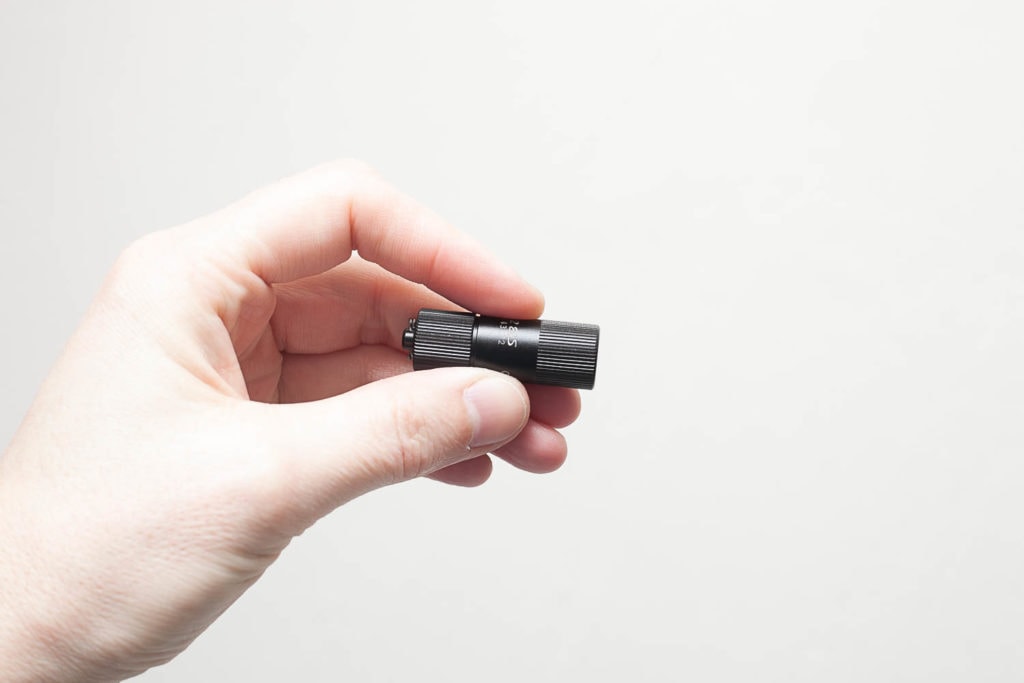
Build Quality, knurling, threads, and anodization
Since the i1R 2 EOS is extremely small, all threading and parts are small as well. So you need to use it with care and don’t use too much force.
Both the body and head have reeding. These are lines lengthwise to the flashlight. They help to twist both parts for use. There is not much else to say about it.
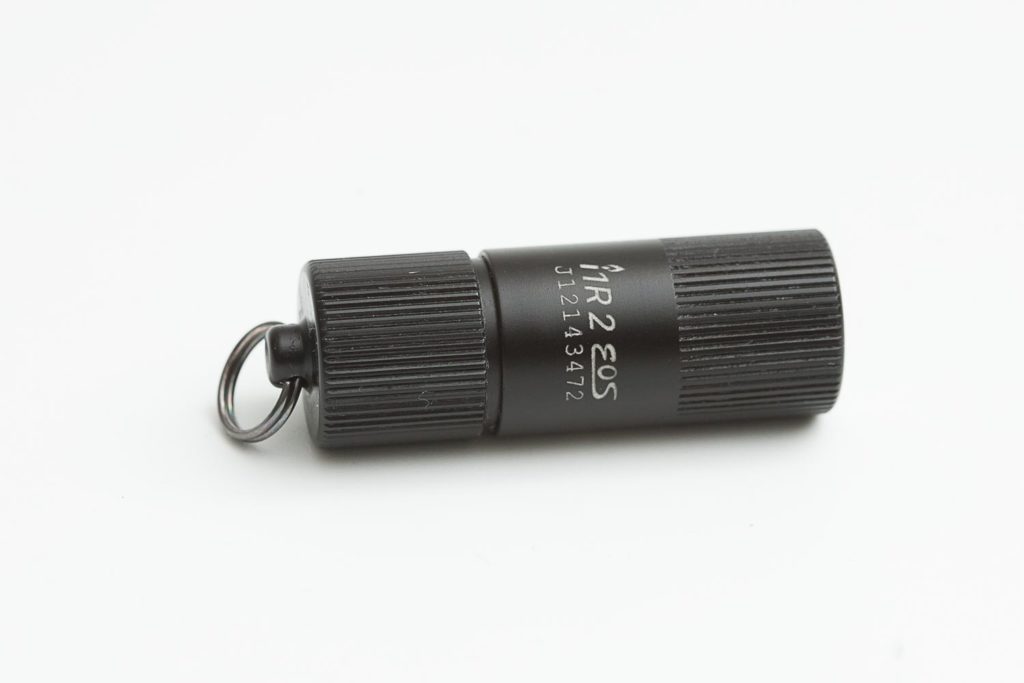
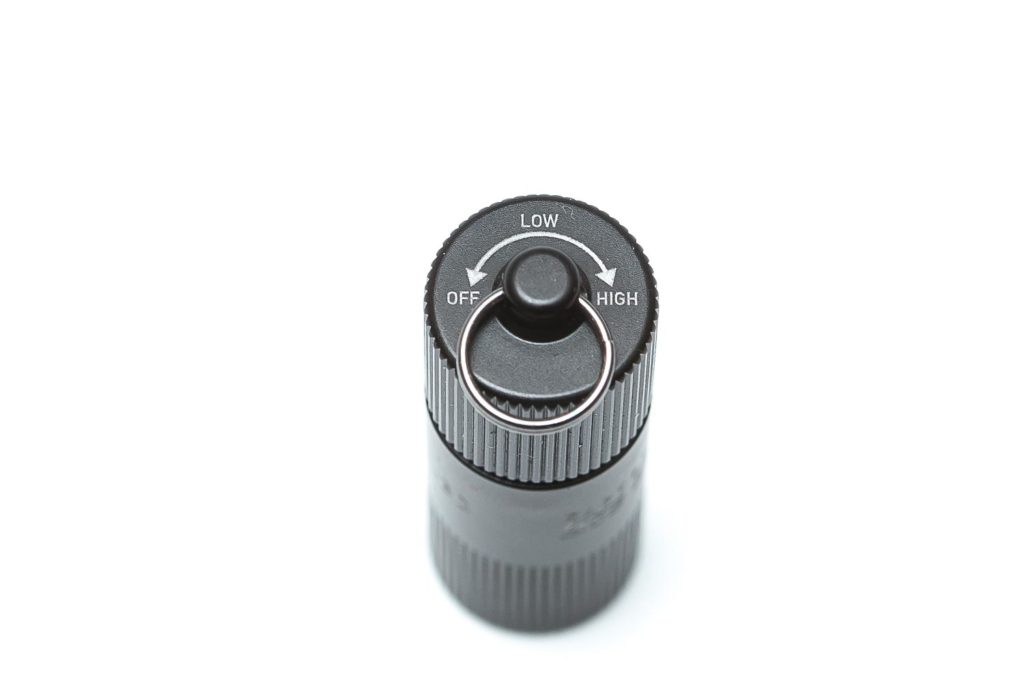

LEDs, Lens, Bezel, and Reflector
I don’t really know what type of LED they use. Looking at the LED doesn’t tell me anything. The Olight website says this about the LED: 5-sided glowing CSP LED. I thought this meant it would glow after you turned it off, but that’s not the case.
The beam has a distinct hotspot and a squarish spill. All parts are aluminum, and I think this could actually look a little cooler if they used some sort of stainless steel bezel.
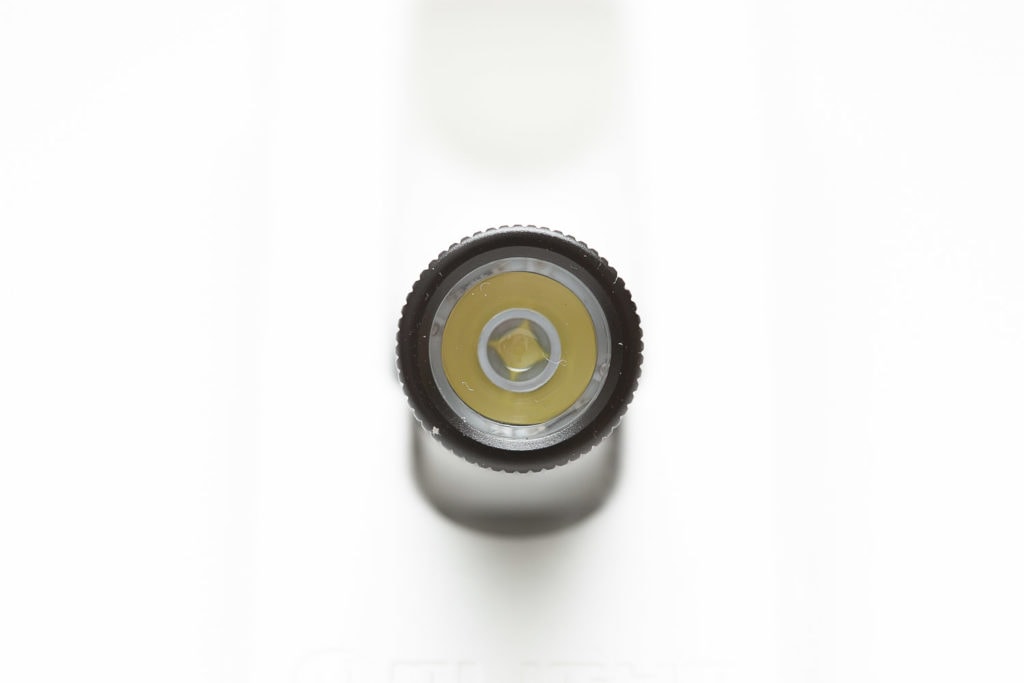
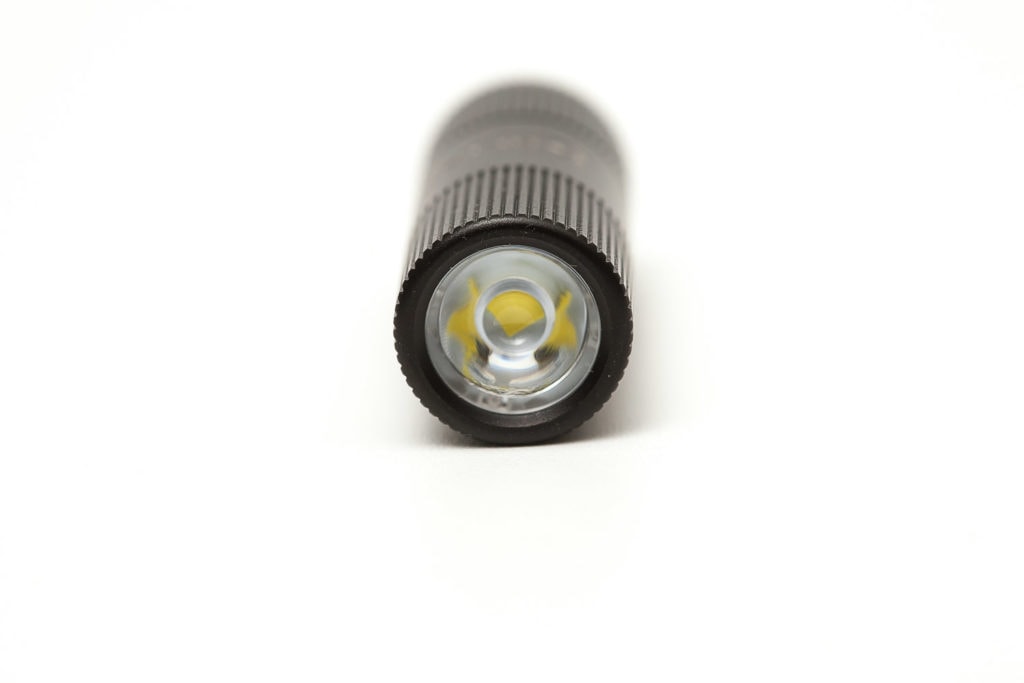
Dimensions:
- Length OFF position (average): 45.15 mm / 1.778”
- Length: Turned On: 44.16mm 1.738″
- length: Completely unscrewed: 53.88 mm /2.12″
- Head + body diameter: 15.06 mm / 0.593”
Weight:
- Inclusive keychain ring: 13.6 g / 0.48 oz
Keychain Flashlights
Size compared to other keychain flashlights:
From left to right: Lumintop Glow 1, Olight i1R 2 EOS, MBI HF-R and Lumintop EDC05.
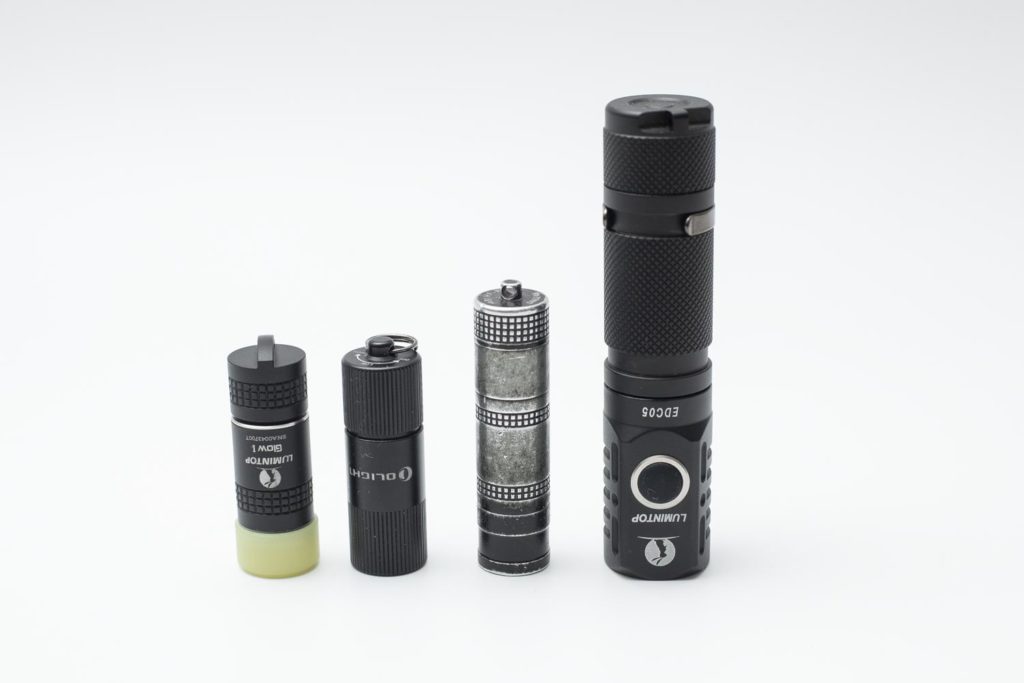

Driver & User Interface:
The simplest UI you can imagine. Twist for Low, and twist a little further for High. Untwist for Off.
Available modes:
- Low High
No blinky modes, no mode memory, no shortcuts and no low voltage warning.
Batteries and charging:
The i1R 2 EOS uses a Micro USB port, but charge speed is low at about 0.06A / 0.08A. This is probably because of the small built-in rechargeable batteries. The battery is rated at 70mAh.
There is a very small indicator LED that is red during charge and green when it’s fully charged. See the pictures below.
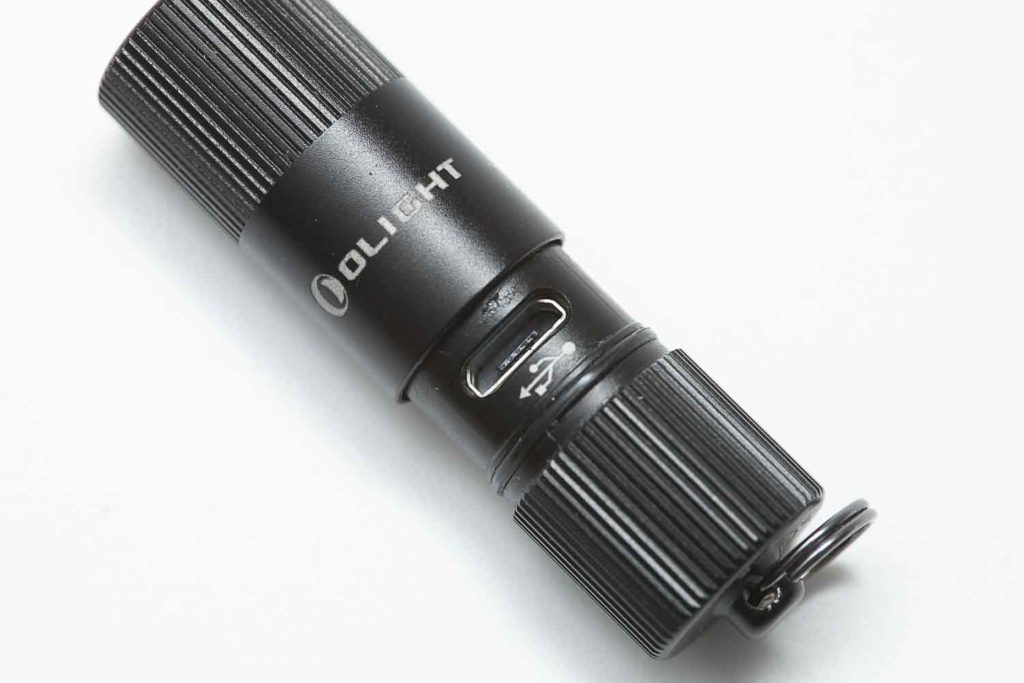
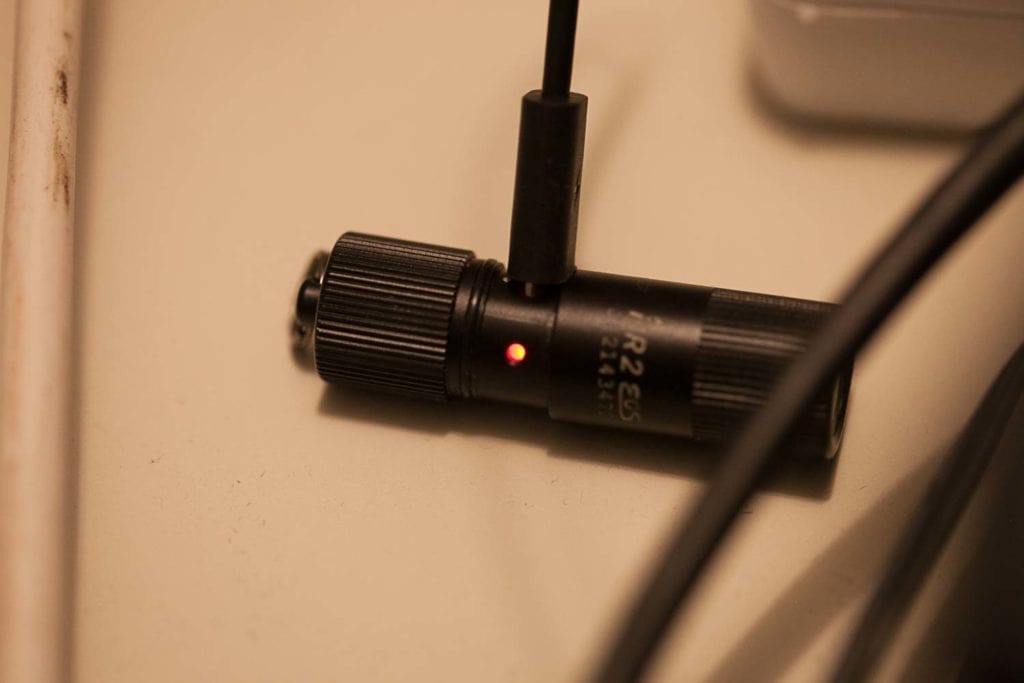
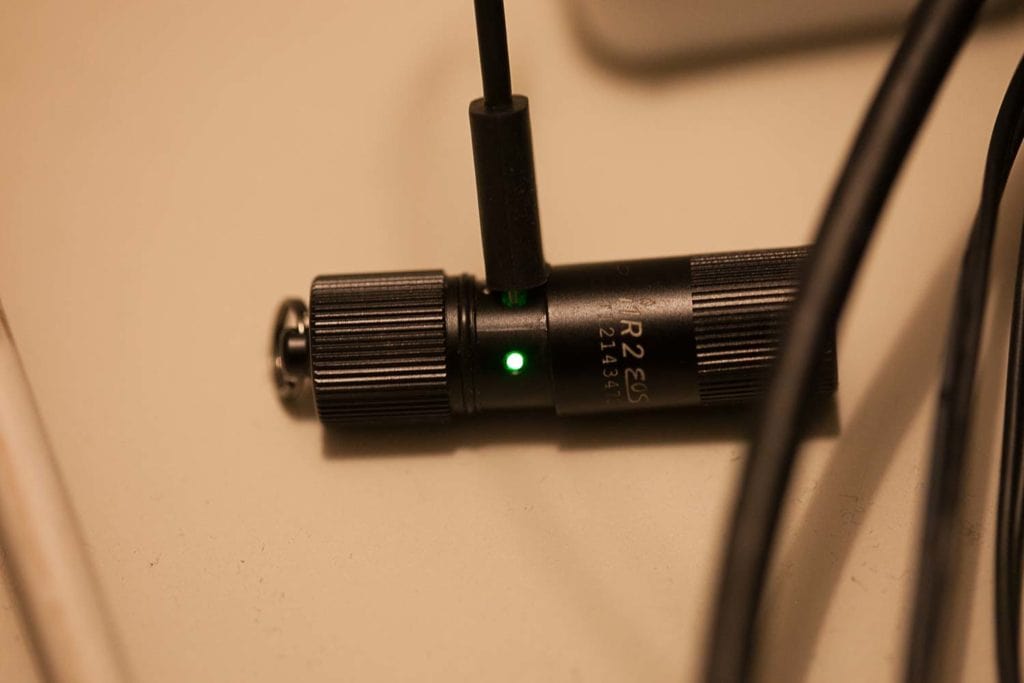
Performance:
Lumen measurements:
All output numbers are relative to my home-made Integrating Sphere. It is set up with an Extech SDL400 Lux Meter for measurements, including a Kenko PRO1D ND-16 filter. The base measurement is done with a Convoy S2+ that has been tested at 137 lumens.
| Mode | Specified | I measured |
|---|---|---|
| Low | 5 | 6.93 Lm |
| High | 150 | 122 Lm |
Runtime:
The runtime test was done with the 50cm integrating sphere, including the Kenko Pro1D ND-16 filter and Extech SDL400 data logging Lux Meter. This graph shows the runtime for High.
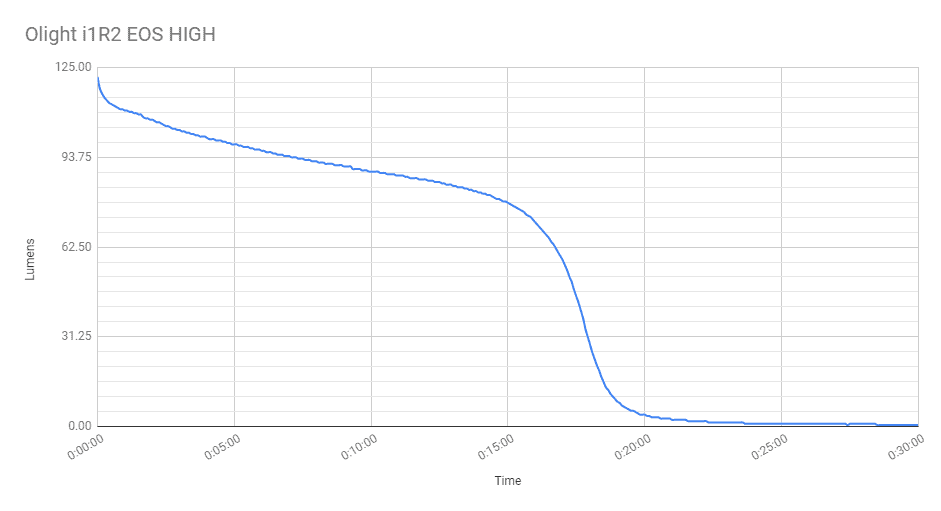
I would call this a 20-minute runtime.
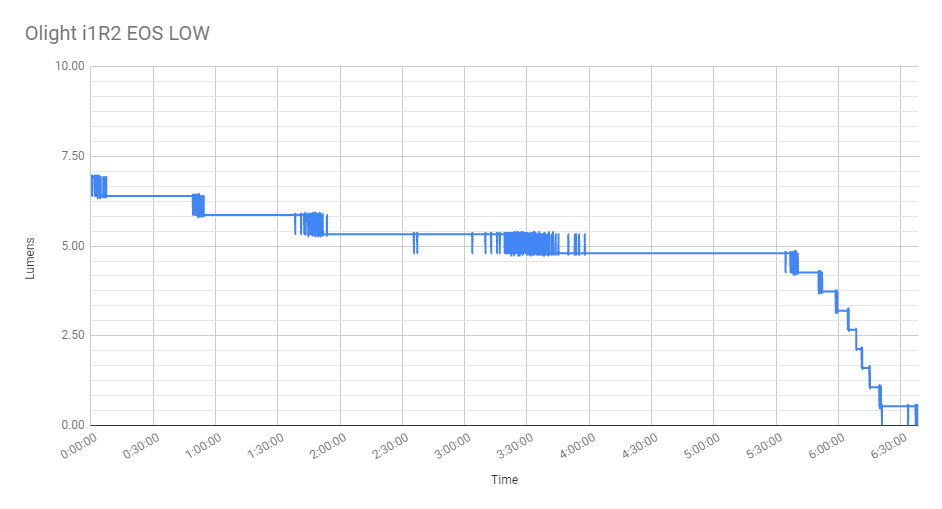
This is the runtime on Low. Please forget about the ups and downs since the actual difference on the meter was only 1 lux. This is because I’m still using the ND filter in front of the sensor. This means much less light reaches the sensor. So the lux readings go from 13 to 12.. and that looks like a bit drop, but in reality, it’s pretty smooth and stable.
It would have been a smoother line if I didn’t use the ND filter. But removing the ND filter too often can cause problems. Right now, it has a snug fit, but each time I remove it, it would get looser and looser. This is a con with the current setup I’m using for ultra low output lights like this one.
Throw measurement:
I measured this at 2 meters distance.
Using the high mode only, I get:
- Indoors (2m): 644 cd = 51meters / 167 ft throw
This is a bit more than they claim at 40 meters. But they might have measured it at 5 meters or even 10 meters distance.
Beamshots
Too weak to really do outdoor beamshots at the places I normally do beamshots.
Disclaimer: This flashlight was bought with my own money. I have not been paid to review, nor have I been holding back on problems or defects.
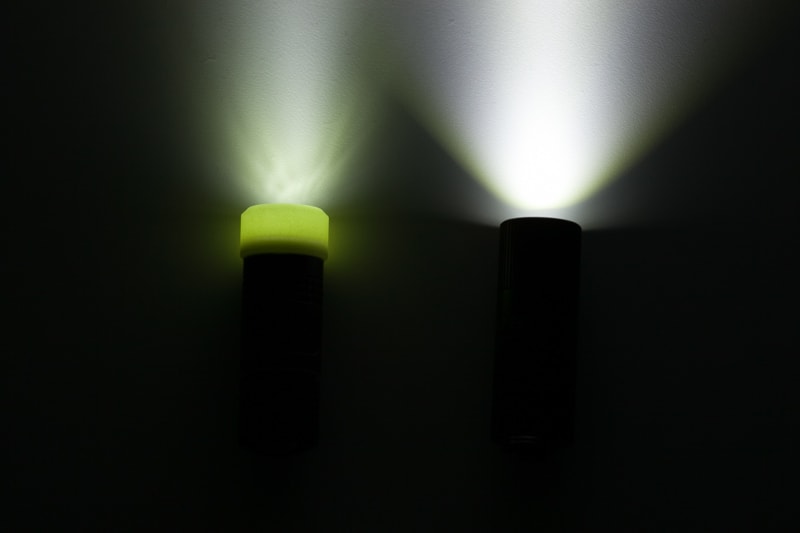

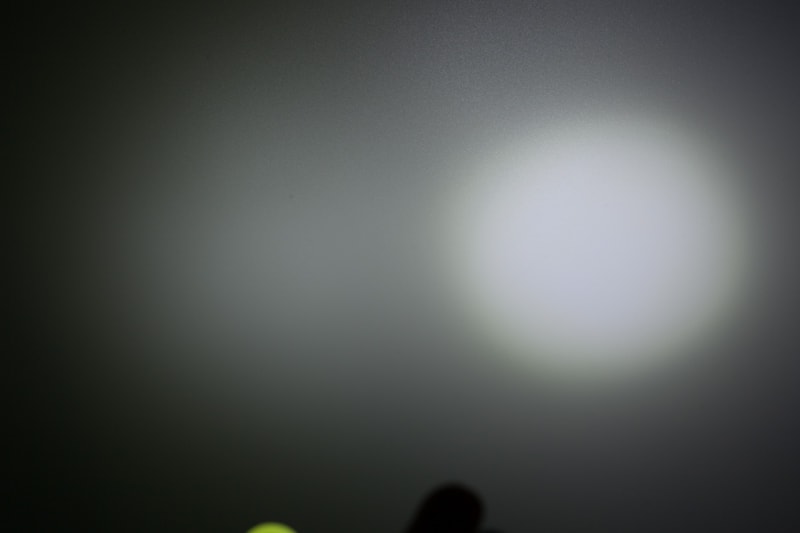
Overall conclusion
Pros:
- Extremely small
- Extremely light weight
- 2 Modes
- Head in not detachable (upgrade from the 1st version)
Cons
- Lack of accessories
- Not possible to change the battery
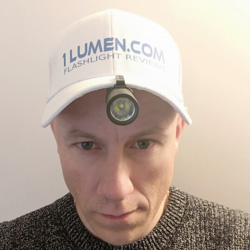
Rating: 4 stars ★★★★
If you’re looking for a tiny keychain light and don’t want to pay more than $20, take the Olight i1R 2 EOS into consideration. The output is pretty good for this kind of light and battery. Of course the runtime is very short because of the type of battery inside. The lack of accessories makes me to take off 1 star.
Olight i1R 2 EOS for sale
Note: the i1R 2 EOS has been discontinued in the US, but still available in the UK. Olight upgraded this with the Olight i1R 2 PRO.
Or if interested, check out the following article: